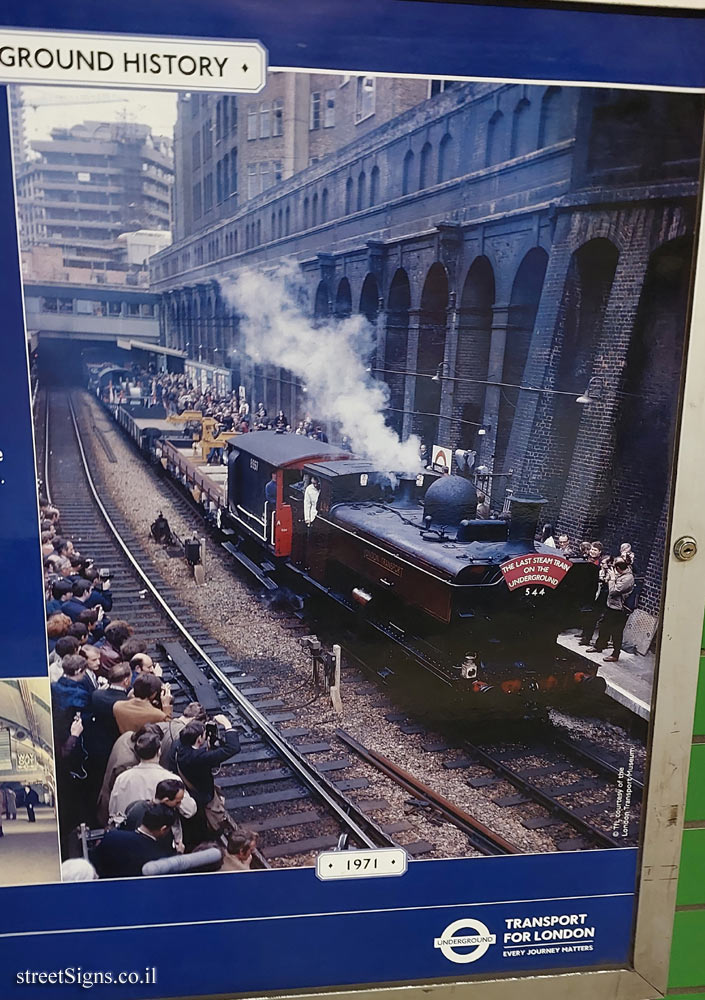LONDON UNDERGROUND HISTORY
Our heritage: Trains London Underground is the oldest metro system in the world, and has a history of innovation in train design and engineering.
When the Underground first opened in 1863, It relied on steam trains to pull its carriages - a system used by some parts of the network until the 1960s! Electricity was first used to power trains in 1890, and soon became the standard on our network.
Other innovations of the Underground included the design of our 1938 stock, which moved equipment from behind the cab to spaces throughout the train to create more room for passengers. In 1968, the Victoria line was the first in the world to use automatic train operation.
Today, our trains are equipped with elements like regenerative braking, which recycles energy back into the operation of the train.
Find out more at
www.ltmuseum.co.uk [Images]:
Below left: An early electric-powered train was photographed outside Moorgate station in 1922
Below right: This photo from 1958 at Piccadilly Circus station shows the pioneering 1938 deep tube train
Right: Despite its sign, the 1971 steam train run from Barbican to Neasden was not the last on the Underground, steam trains still continue to run on special heritage trips
MAYOR OF LONDON
Logo of the Underground
TRANSPORT FOR LONDON - EVERY JOURNEY MATTERS
© TFL courtesy of the London Transport Museum
21



 Click for a larger image
Click for a larger image  Click for a larger image
Click for a larger image  Click for a larger image
Click for a larger image  Click for all signs belonging to London Underground History
Click for all signs belonging to London Underground History
 801 Meter |
801 Meter |  804 Meter |
804 Meter |  1.08 Km |
1.08 Km |  1.47 Km |
1.47 Km |  1.57 Km
1.57 Km